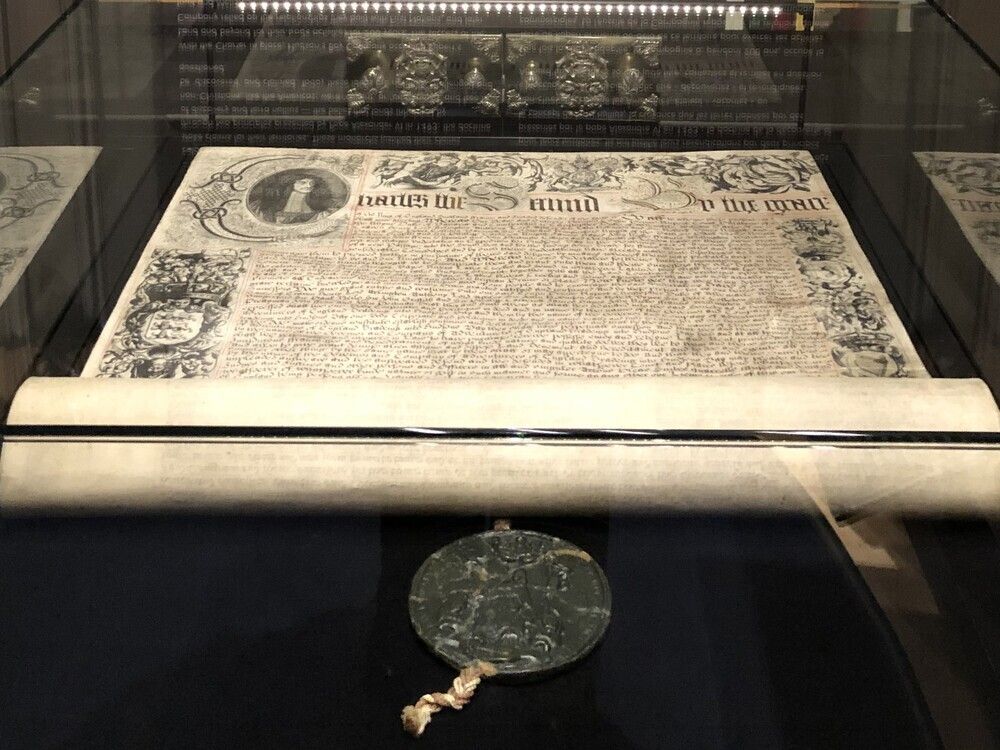The Hudson’s Bay Royal Proclamation Charter, largely seen as one of the foundational documents of Canada, is set to be in the hands of the Canadian Museum of History.
On July 30, the museum announced the proposed donation of the charter from the Weston family, the grocery-store dynasty and one of the country’s wealthiest families.
Pending approval by the court supervising the Hudson’s Bay Company’s creditors arrangements, the family’s holding company, Wittington Investments Ltd., would acquire the royal charter for immediate donation to the museum in Gatineau.
The family would also provide additional funding to support Indigenous consultation on how the royal charter would be “shared, interpreted and contextualized in a manner that respects Indigenous perspectives and historical experiences.”
For Gabriel Maracle, a member of Tyendinaga Mohawk Territory and a Carleton University political science professor who studies Indigenous governance in Canada, the Hudson’s Bay charter “presents an excellent opportunity” to introduce terra nullius to a wider audience. Terra nullius is a Latin phrase for “nobody’s land” and a concept that legitimized the conquest and colonization of Indigenous territories by the British Empire.
“In my field of Indigenous studies and political science, terra nullius is a very well-known term, but in the broader Canadian public it’s a fairly obscure political idea,” Maracle told the Ottawa Citizen.
The concept was “so foundational to Canada as a legal apparatus” and the legal orders that emerged from the British Crown, Maracle said.
Maracle still expects the charter to be displayed as a nation-forming document, but he thinks there is a chance “to have a more serious and contemplative discussion about what does colonialism and colonial history mean for Canada.”
The charter was put up for auction after the Hudson’s Bay Company, Canada’s oldest retailer, announced it would shutter all its retail stores in Canada.
The original Hudson’s Bay Royal Proclamation Charter was written in 1670, featuring the stamp of King Charles II. It decreed that the Hudson’s Bay Company would have a monopoly on the land and resources surrounding Hudson’s Bay, a vast and resource-rich territory at the height of the fur trade.
“This donation is of enormous importance to Canada,” Museum of History president and CEO Caroline Dromaguet said in a media release.
“It ensures the royal charter — one of the most significant documents in Canadian history — will remain permanently held in public trust and will serve as a catalyst for national dialogue, education and reconciliation for generations to come,” the statement continued.
The museum declined an interview request from the Ottawa Citizen.
“Given that our donor’s proposed motion is before the courts and subject to a future court ruling, we have no further comments to share at this time,” Stéphanie Verner, spokesperson for the museum, wrote in an email.

Maracle believes the consultation process for the charter should “start with” the First Nations that were directly impacted by the Hudson’s Bay Company and the carving up of what was then called “Rupert’s Land”
Those nations, surrounding Hudson’s Bay, continue to live with elders’ oral histories, consequences and cultural and social upheaval wrought by the company’s boom and bust.
For example, First Nations in Manitoba live in the wake of the
separation of families that occurred
when old Hudson’s Bay Company towns like York Factory were shuttered. The
closure of the company town caused a relocation inland
for a First Nation acquainted with the coastal region of the Hudson’s Bay lowland.
However, Maracle argues that First Nations across Canada should also be consulted given all nations have had to deal with “the consequences of terra nullius,” which includes land dispossession, forced relocation onto reservations and, ultimately, residential schools and a
history of cultural genocide
.
Maracle sees an opportunity to display the charter in dialogue with oral histories of the First Nations that were employed by the Hudson’s Bay Company as well as written histories of the company men stationed in the region.
But Maracle adds a warning: The display and presentation “runs the risk of downplaying the impacts of colonization or downplaying its role in the colonization of those territories” and “just not listening to Indigenous peoples.”
Maracle sees a parallel with indigenous consultation around the controversial Bill C-5, which will fast-track government approved projects. The scholar says there is something to be said that the Hudson’s Bay charter covers the same territory of the Ring of Fire, the region of Northern Ontario set for critical mineral expansion.
Even the old history of the fur trade has parallels with today’s race for critical minerals in Northern Ontario and the Hudson Bay lowlands, Maracle said, noting that “we could learn from the mistakes of the past” or “just ignore that and barrel ahead and hope for the best.”
“History doesn’t repeat itself, but it rhymes,” he said.
Related
- What Indigenous leaders told King Charles in Ottawa
- Today’s letters: Hudson’s Bay Company’s history more than just a memory



